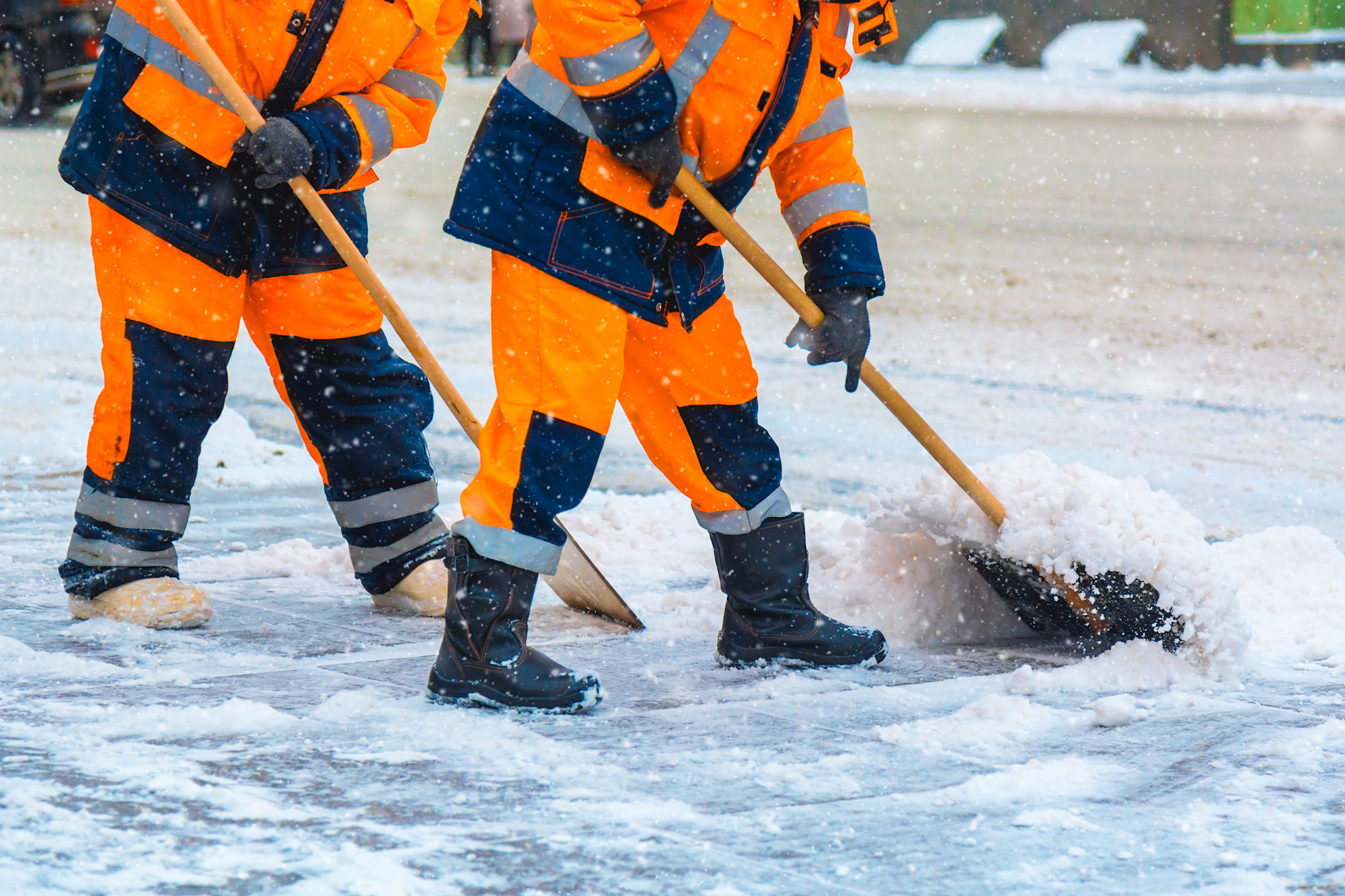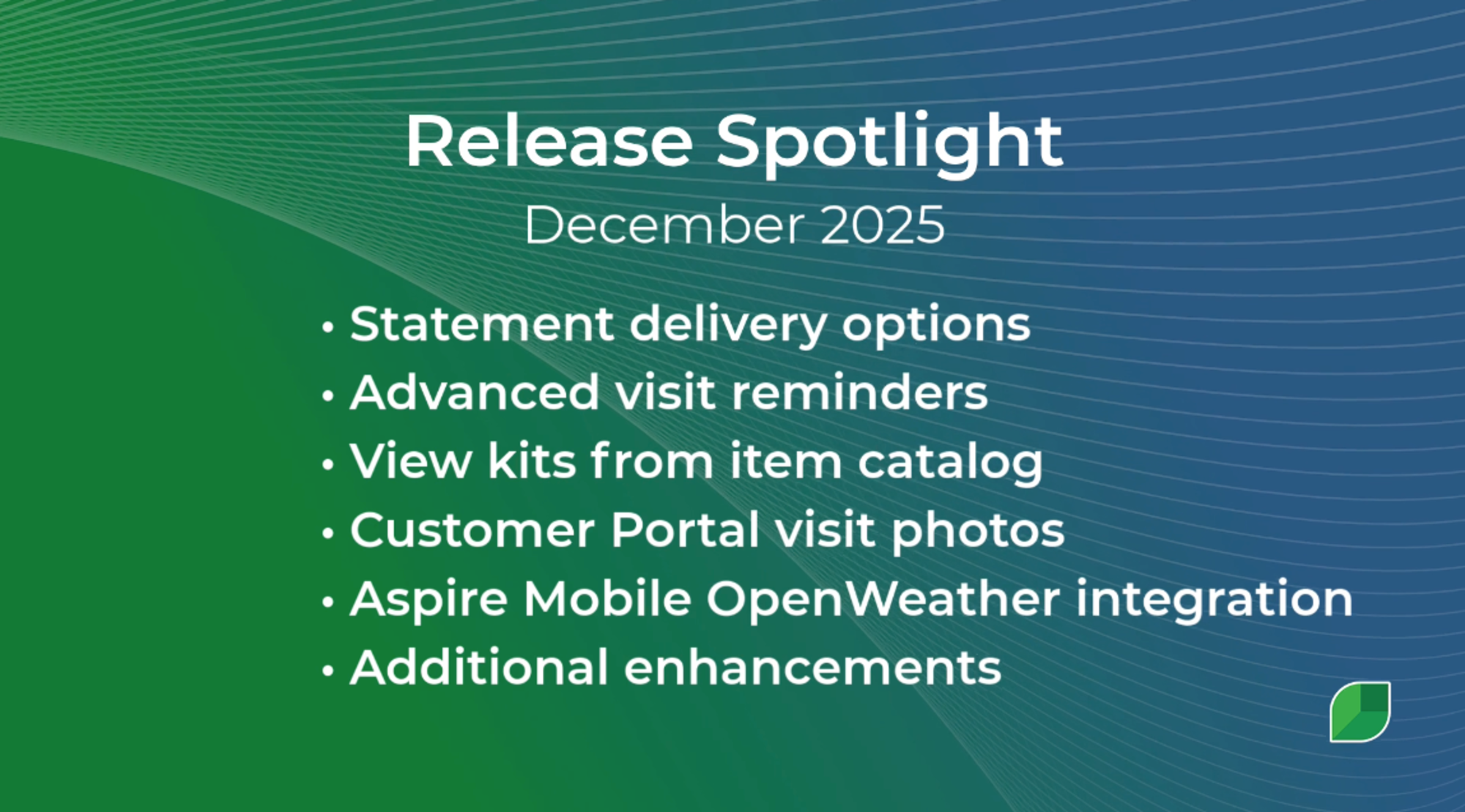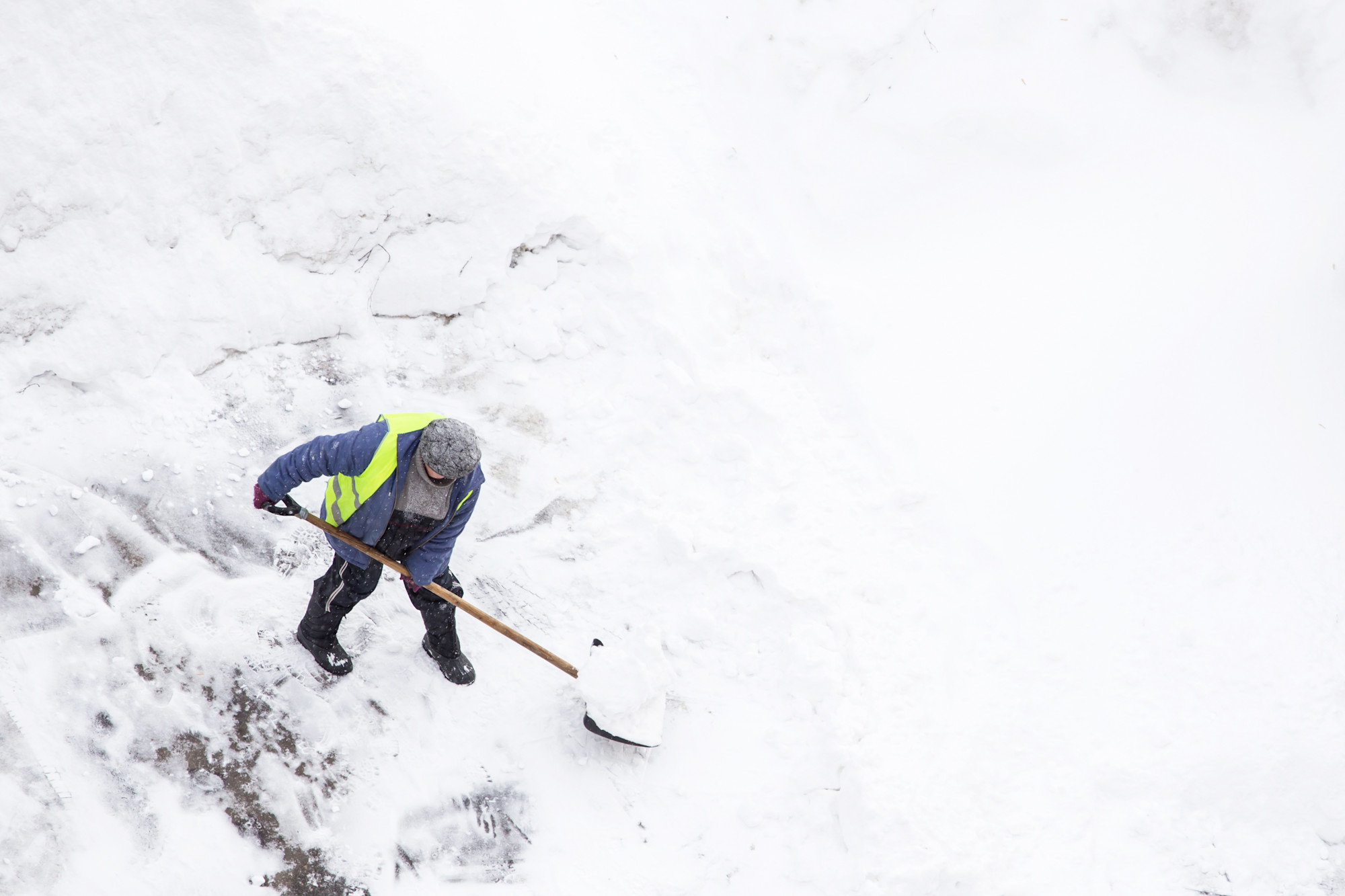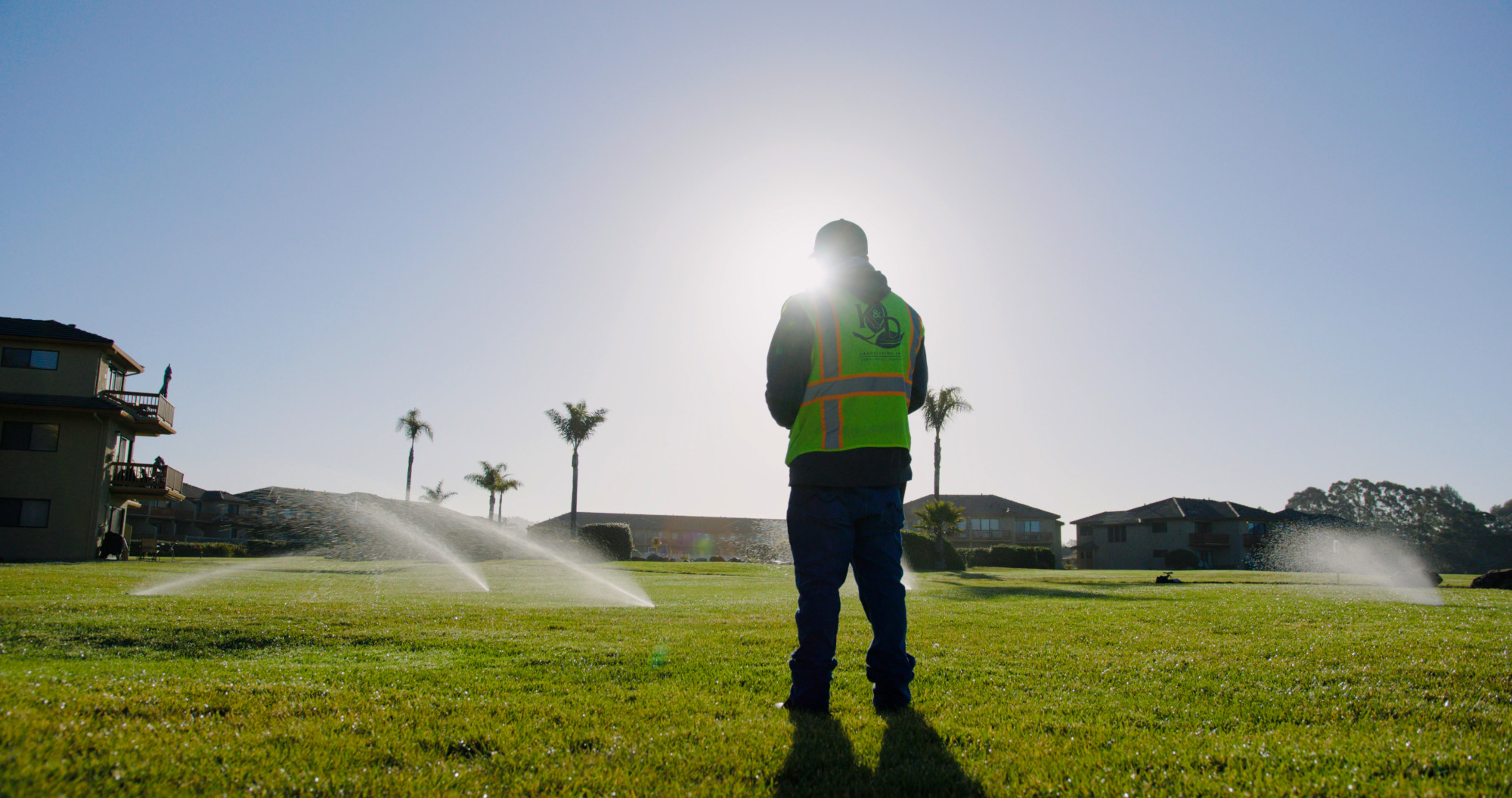Table of Contents
Table of Contents
- What are the best storage options for landscaping equipment?
- Dedicated storage facilities
- Mobile storage units
- Choosing the right storage for small tools and handheld equipment
- How should you store landscaping equipment to prevent rust and damage?
- Best practices for gas-powered landscaping tools
- How to store battery-powered tools safely
- How can landscaping equipment be organized efficiently?
- Common storage mistakes to avoid
- How should landscaping equipment be stored in different seasons?
- How to prepare landscaping equipment for the winter season
- Best practices for spring and summer storage
- What security measures can protect landscaping equipment from theft?
- How can Aspire help you store and manage landscaping equipment?
- Streamlined monitoring and management
- Simplified financial planning for equipment investments
Dull blades, mildew growth, flattened tires, and clogged fuel lines.
These are just a few of the problems you’ll face without a proper storage system for your landscaping equipment.
An effective system brings order to your business and saves you from costly repairs.
Without one, your landscaping tools descend into a short lifespan chaos, slowing down operations and eating into your profit.
No one wants that.
Discover how to store your landscaping equipment in this guide with proven tips to help improve the lifespan of your tools.
What are the best storage options for landscaping equipment?
The best options depend on the size of your landscaping business. For example, an enclosed trailer is a cost-effective option for a sole operator as it houses all your equipment, offering easy access and secure storage.
Conversely, larger landscaping businesses must invest in a dedicated storage facility to accommodate a broader range of tools.
Listed below are different storage options for your landscaping tools based on business needs.
Dedicated storage facilities
These include warehouses, garages, enclosed shop spaces with roll-up doors, or shipping containers.
They are ideal for large landscaping companies with equipment fleets and multiple trucks. These dedicated spaces provide security, weather protection, and ample room to organize your equipment.
Mike Andes, founder of Augusta Lawn Care, shares that his company stores equipment in shipping containers on an empty lot.
According to him, this setup allows the company to store landscaping equipment, track broken or missing equipment, and stay organized. There are different designated sections inside the container for specific tools, from hand tools to shovels, rakes, hoses, and blowers.
This system helps the team pick up what they need in the morning before heading out.
Mobile storage units
This storage option is best for small to medium-sized landscaping firms wanting quick access to their equipment. Some examples include enclosed trailers, vans, or trucks.
Mobile storage units provide equipment security as you can park the truck in your home garage, a secure parking garage, or a self-storage unit, and organize equipment to suit your workflow.
For example, handheld tools could be mounted on truck walls with wooden shelves to keep them off the floor and away from moisture.
But whether you opt for a dedicated or mobile storage option, ensure it’s a climate-controlled area to prevent weather-related damage.
Here’s how to keep a storage space climate-controlled:
Insulate the walls and roofs of the space to maintain a cool temperature, using materials like polystyrene foam.
Implement good ventilation by placing vents that allow airflow.
Ensure doors and windows are properly sealed to prevent dust, humidity, etc. from entering the storage area.
Keep equipment above the ground to avoid moisture accumulating underneath.
Choosing the right storage for small tools and handheld equipment
Small landscaping tools and handheld equipment can be stored in mobile and dedicated storage units.
But for easy access, Andriy Boyko, founder of AO Handy, recommends using hanging racks and wall hooks.
“I hang most of my tools on pegboards or wall hooks to keep them off the ground and away from moisture,” he says. “Long tools like rakes and shovels go upright on wall racks. Small items like trowels or gloves go in labeled bins or drawers.”
How should you store landscaping equipment to prevent rust and damage?
The first rule is to clean your tools after use.
Michael Clarke, founder of Yardwork, says: “To keep landscape equipment from rusting and becoming damaged, it's best to clean equipment after use by removing dirt, sap, and moisture with a wire brush or cloth.” This keeps the equipment dry, preventing rust and corrosion, which can weaken the metal and shorten its lifespan.
Next, use proactive coatings like silicon spray on the metal parts of your landscaping equipment to prevent rusting. Boyko sprays a light coat of WD-40 or tool oil on any equipment with a blade before storing it.
You can apply linseed oil to the wooden parts to avoid drying and cracking.
After that, move the equipment to a humidity-free storage facility. Ensure tools aren’t on the floor or stacked against each other for proper organization.
Use wall hooks, shelves, pegboards, or ceiling mounts to keep tools away from damp floors, which avoids rusting, and keep the area well-ventilated.
Best practices for gas-powered landscaping tools
Equipment such as mini-excavators, lawn mowers, blowers, or steer loaders requires extra care when placing them in storage units.
To prevent tools like these from being damaged, here’s what you need to do:
Clean the power tools after use, removing debris and other dirt.
Store the equipment in a cool, dry place—preferably on a shelf away from moisture.
Ensure the carburetor is covered and the gas cap is on.
Drain the oil and gas if the engine will be out of use for an extended period. For occasional use, use fuel stabilizers. This will keep the fuel from turning into varnish, which would harm the engine.
Boyko describes his storage method, “I drain the fuel if I won’t use them for a while and check filters and spark plugs before storage.”
He also uses plastic storage bins with lids or dedicated shelving to keep dust and dirt away from his power tools.
How to store battery-powered tools safely
If you own battery-powered landscaping tools like cordless lawn mowers or snow blowers, here’s how to preserve their battery life:
Keep it clean and dry when not in use.
Remove the battery to preserve its health and reduce the risk of corrosion.
Arrange the tools on shelves or cabinets for easy access and to prevent moisture.
Keep the battery away from metal objects like nails, as it could short-circuit the battery terminals.
Use labels and a storage box to keep your batteries organized, avoiding mix-ups when using them.
Avoid storing drained or fully charged batteries. It can stress them and shorten their lifespan. Charge them to about 40% to 70% before storing them.
How can landscaping equipment be organized efficiently?
You waste time, create frustration, and damage morale when your teams have to search for tools that are impossible to find, buried in cluttered storage, all because you lack a smooth, organized system.
Having strong organizational systems streamlines your mornings, eliminates frustration, and ultimately saves money because equipment doesn’t need to be replaced as often, and teams aren’t late to their first jobs of the day.
Here are some tips to help you organize your landscaping equipment:
Categorize tools by their function. For instance, you can group different watering tools in a caddy and arrange cutting equipment on a pegboard.
Group tools by job type, e.g., mowing equipment, clean-up, or trimming tools.
Build pegboards and shelves in your storage units to help store categorized tools.
Keep frequently used and larger tools close to the storage unit’s entrance. Boyko of AO Handy says larger equipment at the entrance keeps him from dragging it over smaller tools, disorganizing his space.
Ensure everything is labeled, making it easy to identify and pick what’s needed for a project.
Create equipment inventory using Aspire’s equipment management tool. It allows you to log all your landscaping equipment, using its model, class, or size. This ensures you keep track of the tools and can identify which ones are in use or need servicing.
Common storage mistakes to avoid
It should go without saying that your landscaping equipment shouldn’t be exposed to weather elements or wet conditions.
Boyko puts it correctly: “Landscaping tools left outside or just lying on the ground will rust, corrode, or get damaged by sun, rain, and dirt…By keeping everything organized in a clean, covered space, I extend the life of my gear…”
Other mistakes to avoid include:
Overcrowding your storage areas. Whether it’s a shipping container, shed, home garage, or truck, prioritizing accessibility is key. It eliminates clutter and keeps landscaping equipment from being stacked on top of one another.
Forgetting regular clean-ups. A little grime and debris here can cause rust and mechanical issues. Ensure you clean the equipment before putting it in the store.
Not tracking equipment inventory. An updated list of all your tools helps monitor available tools, which ones are in the field, and their condition. Thankfully, Aspire’s inventory management simplifies this process. It provides those insights and more to help you plan landscaping projects.
How should landscaping equipment be stored in different seasons?
The landscaping business is highly seasonal. During the spring and summer months, there’s a spike in demand. And with it, your landscaping tools see heavy use, leading to increased engine wear and tear.
Storing equipment in these seasons differs from other periods, like winter, when the equipment sits idle for months.
Below are tips to help you prepare and store landscaping equipment through different seasons.
How to prepare landscaping equipment for the winter season
Start with proper winterization. This involves:
Draining fuel from the equipment tanks.
Adding fuel stabilizers if you will be using the tools.
Removing batteries from equipment to eliminate the risk of corrosion.
Lubricating the moving parts of your landscaping equipment regularly.
Anna Ohler, owner of Bright Lane Gardens, does all that and also recommends sharpening blades and covering everything properly.
She adds, “Most batteries don't hold a good charge in the cold, so if you do any landscaping projects during the cold months, you want to find a heated location to store and charge your batteries.”
Best practices for spring and summer storage
For the peak season, frequent cleaning is needed to prevent clogs and debris buildup.
Next, schedule regular maintenance where you check blades for sharpness, oil and fuel levels, and tire pressures. This is particularly crucial because of the equipment’s constant use and exposure to dirt, heat, moisture, and debris.
Some tools will also need quick repairs after a long winter to ensure they are back at functioning capacity.
When the equipment isn’t in use, store it in a cool, dry storage space to prevent overheating and exposure to UV rays.
What security measures can protect landscaping equipment from theft?
At the very least, being security-conscious is essential for protecting your landscaping equipment. These tools are valuable investments, and without proper security measures, they become easy targets for theft, which ultimately eats into your profits.
So, how do you protect your landscaping equipment?
Clarke, the founder of Yardwork, recommends the following:
Use padlocks and deadbolts on sheds, garages, and storage containers.
Secure trailers with hitch locks and wheel boots.
Install cameras, motion sensors, alarms, and outdoor lighting with motion detection around storage areas.
Install GPS trackers on large, expensive equipment like ride-on lawn mowers.
Use heavy-duty chains and padlocks to secure tools on trailers and trucks.
Employ a login/out system for equipment use by employees.
How can Aspire help you store and manage landscaping equipment?
Aspire is a digital tool that helps you manage your landscaping business effectively.
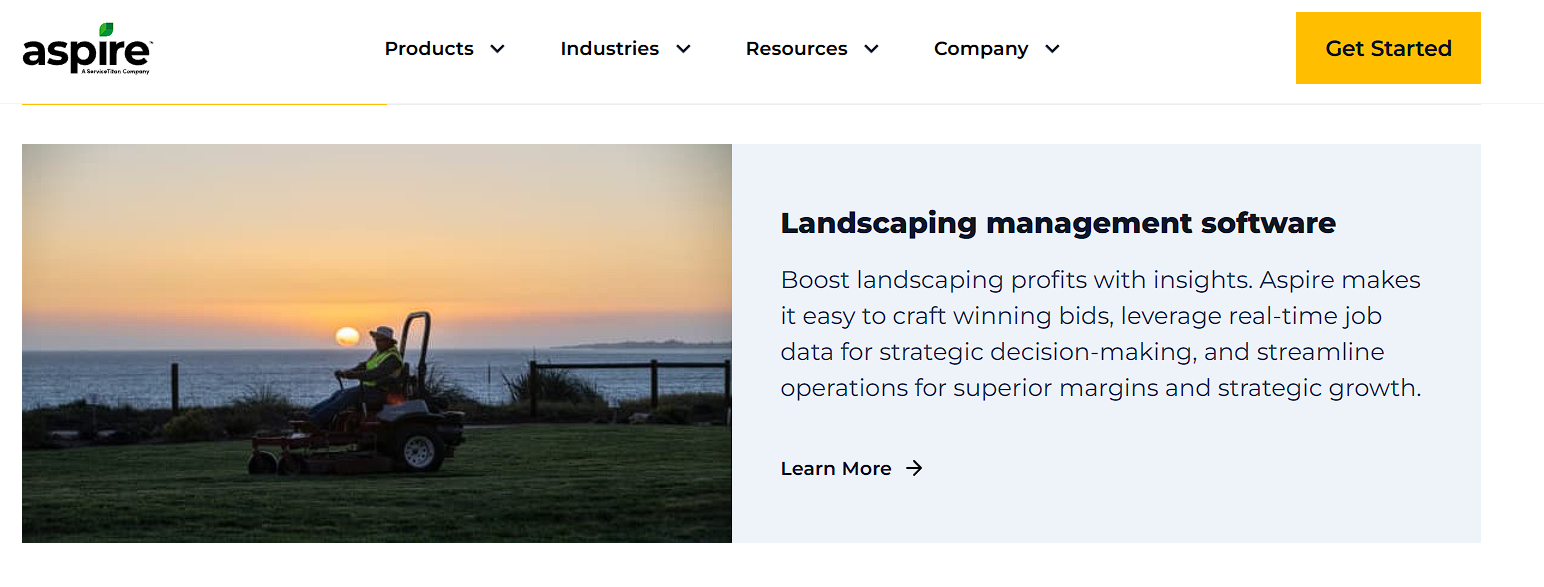
Picture a centralized platform that enables you to create accurate estimates to win contracts, schedule projects, monitor progress, and get paid.
In addition, Aspire has equipment-management features that offer the following:
Tracking equipment value and depreciation
Once your landscaping equipment is logged into Aspire, you can enter the number of hours a tool has been used. This setup lets the system automatically trigger maintenance alerts for individual pieces of equipment.
Aspire’s crew management enables field employees to notify fleet managers or mechanics when a tool breaks down.
It records details such as the type of service performed, cost, date, hours used, and additional comments. All that helps you track the equipment’s value over time, so you know if it’s still valuable or has depreciated and needs to be sold.
Streamlined monitoring and management
Discover where your landscaping equipment has been, its usage history, and maintenance records. With Aspire’s FleetSharp GPS integration, landscaping businesses have real-time insight into their inventory gaps and trends.
Simplified financial planning for equipment investments
Increase profitability with Aspire’s landscape inventory management. It lets you identify excess stock and recoup your capital to invest in new equipment or to expand the business.
By allowing you to take stock of landscaping tools digitally, you minimize labor costs and save money.
In a nutshell, there’s just a lot that Aspire enables landscaping companies to achieve.
John Caramanico Jr., president at C. Caramanico and Sons, says:
“There’s no better solution for a company like ours that can handle maintenance, snow, and enhancements. I would recommend Aspire to any serious professional in the landscape industry.”
Want to see how it works in real-time?

